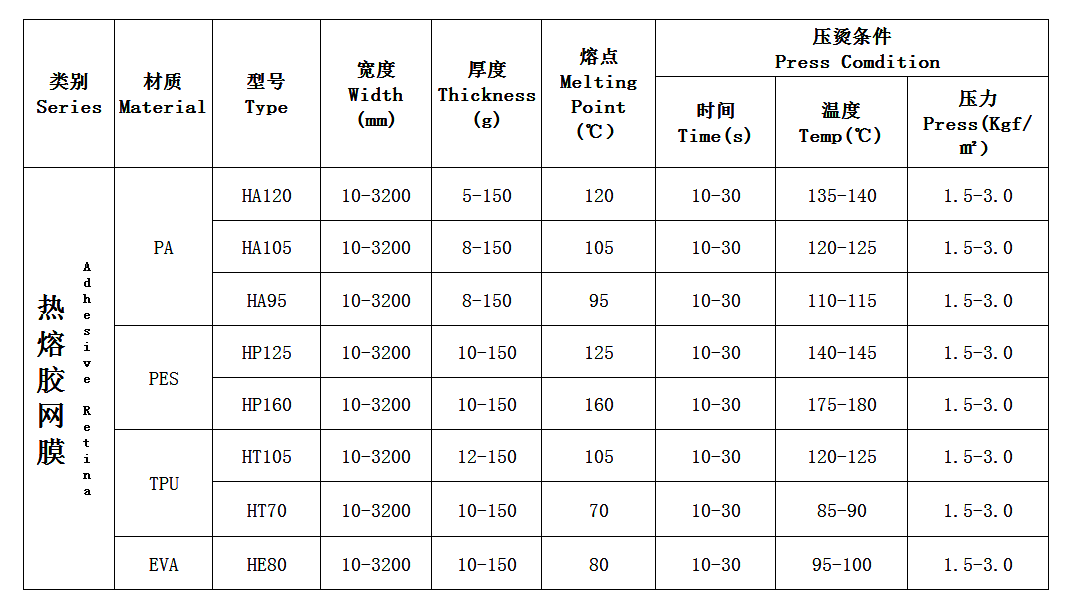The hot melt PES web film,in the process of processing, no harmful solvent is added, but only the physical state of hot melt adhesive is changed. It inherits the characteristics of environmental protection, wide bonding range and fast bonding of hot melt adhesive. It can be applied to fabrics, leather, metal, plastic, microfiber, non-woven fabric, wood, paper...
| Price | Contact Us |
| Brand Name | HengNing |
| Place of Origin | Shanghai, China |
| Payment Terms | T/T, L/C, Western Union, etc. |
| Delivery Detail | 10-25 Working Days. |
Hot melt mesh film, which is not sticky to the touch at room temperature, becomes sticky after the melting of the heated adhesive layer. It is made of hot melt adhesive material, and it is made of spider web by meltblown web laying equipment, and its appearance is similar to that of non-woven fabric. When used, it is placed directly between two layers of materials to be bonded and hot pressed at a certain temperature for a period of time to achieve the bonding of the two layers of materials.
It can be used for bonding between fabric, leather, metal, plastic, microfiber, nonwoven, wood, paper ......, etc. The hot pressing process is simple, high peel strength, dry cleaning resistance, environmental protection and odorless, which is a better choice for export-oriented products.
The use of hot melt mesh bonding is better than glue bonding is:
1. eliminating the complicated process of glue application and related equipment.
2. the use of very fast, heating - cooling will stick firmly.
3. on textiles, leather, fabrics, glass fiber products bonding fastness than the same price glue.
4. environmental protection adhesive, no harm to the environment and human body.
5. no need to worry about bad glue control and glue seepage, the composite material is clean and tidy, no odor. glue
6. the bonded material after washing and dry cleaning does not fall off, no wrinkles, no blistering.
Main application areas:
Garment: garment door lapel, cuffs, hem, collar, foot opening, etc. pleated edges, smooth seams, belts, straps, shoulder pads fixed, etc., bonding of underwear fabrics.
Automobile: bonding of automobile headliner, carriage insulation floor, sound-absorbing board, seat ornaments, etc.
Material compound: bonding compound all kinds of textile fabrics, sponge, rubber foam, non-woven fabrics, paper, leather, aluminum foil .....
Other: furniture, wood, upholstery, and many other areas requiring bonding.
